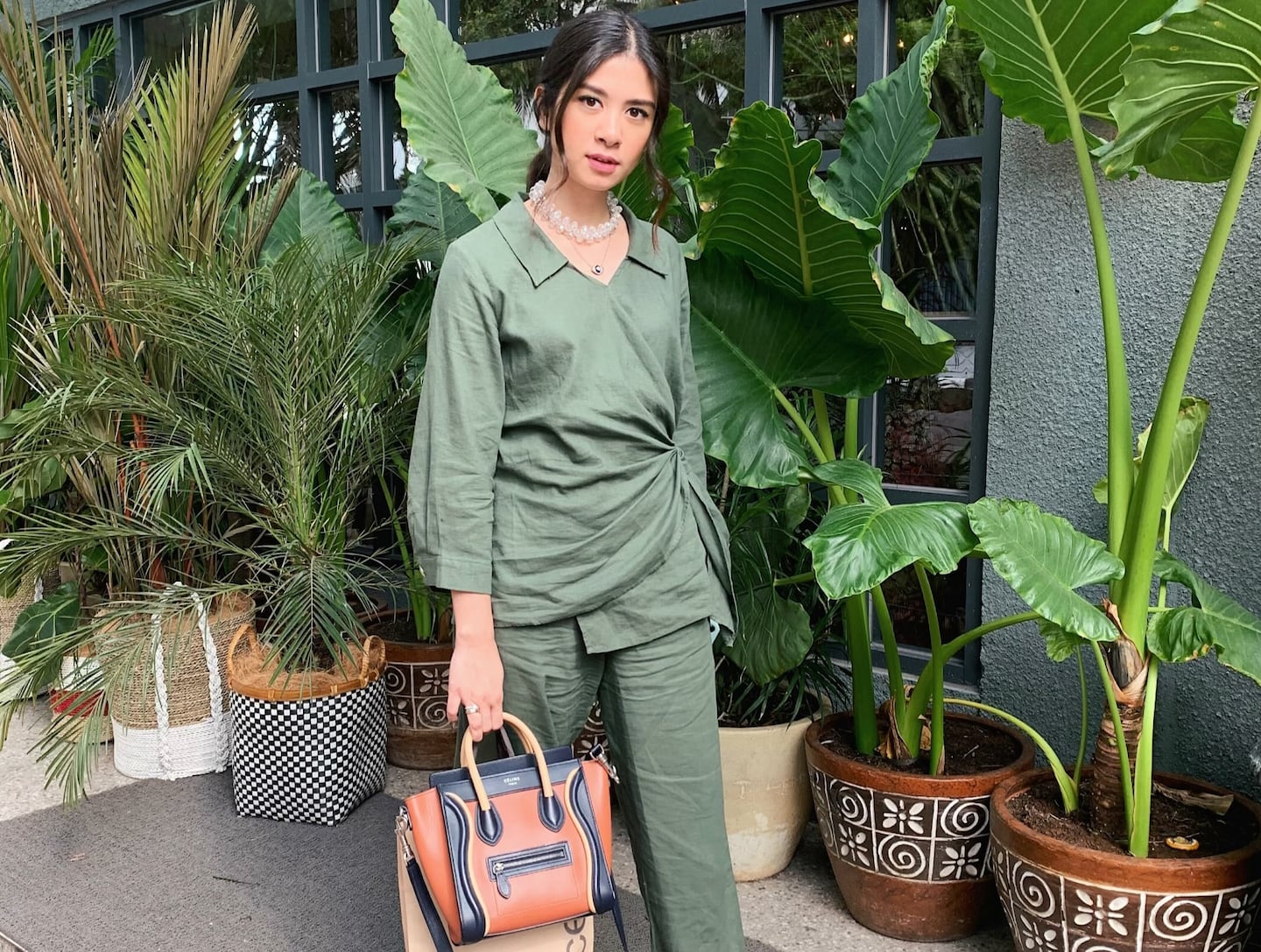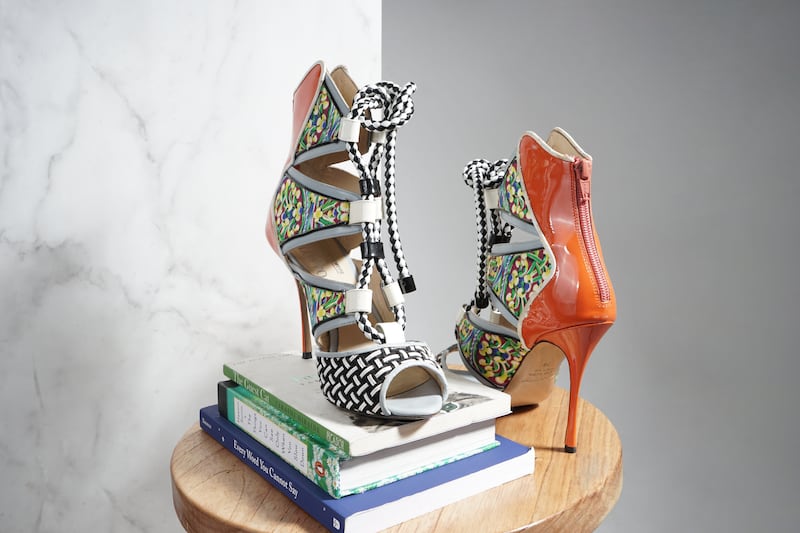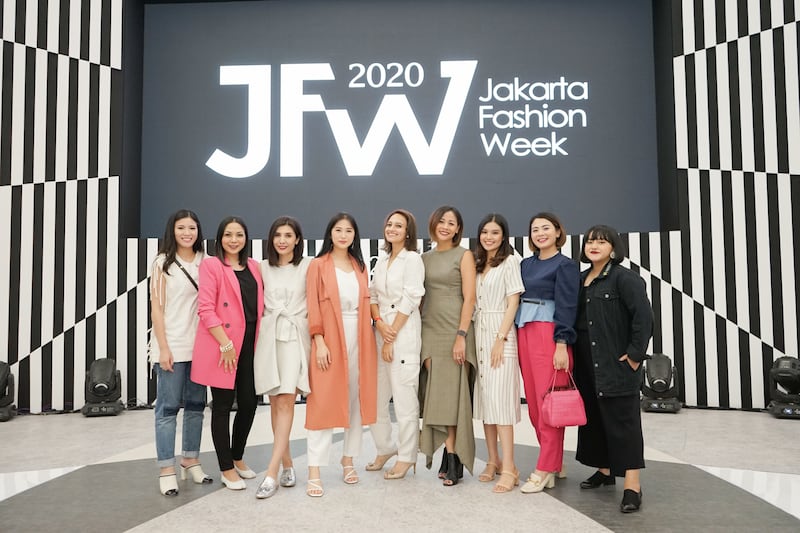
The Business of Fashion
Agenda-setting intelligence, analysis and advice for the global fashion community.

Agenda-setting intelligence, analysis and advice for the global fashion community.

Companies such as Vestiaire Collective and The RealReal have built strong online fashion resale platforms in Europe and the United States, but they have not yet conquered Asia, or other luxury strongholds, around the world like Russia – and for a good reason.
It would be a mistake to assume that other vintage and resale markets are as developed as, say, Japan or South Korea. In China, where pre-owned items account for just 3 percent of the luxury market, according to data from Berenberg Bank, resale has struggled for cultural reasons: newness is a cherished characteristic among the newly affluent. Similar taboos exist in other emerging markets where there is either no long tradition of thrifting or no established secondary market.
“Buying second-hand hasn’t been ingrained in us at all,” says Samira Shihab, chief executive and co-founder of Indonesian fashion resale platform Tinkerlust, a site with around 180,000 monthly users selling second-hand luxury goods from the likes of Gucci, Chanel and Prada. “When we launched [in late 2015], nobody [here] knew what pre-loved meant.”
A lack of awareness — or indeed an outright aversion to buying second-hand fashion — is only one half of the dilemma global resale platforms face. The mechanisms used to get inventory from sellers to buyers often aren’t well suited to conditions in potentially lucrative emerging markets.
ADVERTISEMENT
Bigger than fast fashion?
The potential upside for global platforms is real but, more often than not, it’s a local competitor who is making the most aggressive play for the resale market. Local platforms have not only the first-mover advantage, but an understanding of what it takes to persuade dubious consumers to give used luxury goods a go.
That’s not to say it has all been smooth sailing.
“When we started [10 years ago], we were breaking through walls. A lot of time had to be spent making it clear to the audience that wearing second-hand is much better than supporting fast fashion,” says Anna Lyuban, founder of the Russian resale platform SecondFriendStore, which has around 40,000 monthly users.
“When we started, we were breaking through walls.”
— Anna Lyuban
According to analytics firm GlobalData, fashion resale is growing 21 times faster than sales of new clothes and will reach $36 billion by 2024. If trends continue, resale will not only be better for the environment but also a bigger business than fast fashion by 2029.
Emerging markets should be a much bigger part of the overall pie than they currently are. Already, according to World Data Lab, women aged 15-30 spend upwards of $7.6 billion a day on apparel in the 20 largest emerging markets, while the same demographic spends only around $5.5 billion per day in the 20 largest developed economies.
Resale platforms hoping to corner their local markets have sprung up around the world in recent years and are fast raising funds to fuel their expansion. Chinese luxury fashion resale platform Plum has brought in around $50 million in venture capital to duke it out with rivals such as Secoo and Zhi Er. Dubai’s The Luxury Closet has raised millions to grow in the Middle East, while GoTrendier has done the same in Mexico and Colombia. Brazilian resale platform Enjoei, whose name translates to ‘I’m tired [of this]’, generated $205 million in an IPO late last year.
How are comparatively small local resale platforms like these able to overcome some of the deep-rooted challenges they face in emerging markets — and what can their much bigger rivals in the West learn from their approach?
ADVERTISEMENT
Winning hearts and minds
Shihab says she was familiar with sites such as The RealReal, Tradesy and Poshmark when she launched Tinkerlust with her business partner Aliya Tjakraamidjaja. Much of what those platforms were doing — creating an intuitive, searchable, enjoyable user experience that builds trust — informed their initial approach. In other respects, though, Tinkerlust had to do things differently to nurture a nascent local market and tailor their offering to Indonesian consumers.

At the outset, for instance, Shihab says shoppers in Indonesia simply were not talking about sustainability, one of the main motives for buying second-hand items. Five years ago, that term was very foreign, she says.
And perhaps the most obvious motive for buying used clothes — saving money — doesn’t always resonate in emerging markets where income disparities are quickly increasing, creating anxieties about who is pulling ahead and falling behind. Consumers are often more eager to signal their spending power than snap up a bargain.
“We really care what people think about us,” Shihab says. “What we wear, what things cost, is a data point in societal acceptance.”
There has been a stigma against buying clothes second-hand in Russia, a perception not helped by the old way of doing things.
“There were only Soviet-style offline places, where ageing ladies of a recognisable unbothered local type would sit and list on a piece of paper all the stuff you wanted to sell,” says Lyuban.
However, attitudes towards resale in Russia have begun to change thanks to the efforts of resale platforms, global trends and current economic realities. In US dollars, the Russian Rouble is worth less than a third of what it was at its peak in 2008, making the purchase of those used luxury items already in Russia much more affordable than new items imported from France or Italy.
ADVERTISEMENT
Sasha Krymova, co-founder of fashion consultancy Dear Progress, says that together these factors have shifted the conversation in Russia from “I buy second-hand because I can’t afford something new” to “I buy second-hand because it’s limited, it’s conscious, it’s smart and I don’t have money for something new.”
Despite this change, Krymova says platforms wanting to succeed in Russia still “have to work harder on PR in order to popularise resale and second-hand fashion”.
Tinkerlust has introduced Indonesian shoppers to fashion sustainability education on its channels, including TikTok and Instagram, by engaging 16-20 influencers per month, an effective strategy in Southeast Asian markets where word of mouth is highly trusted.
“Influencers here are more valuable,” Shihab says. “They have a strong community, and people really hear them out, especially in certain segments.”
Lyuban says that for SecondFriendStore, the most effective marketing efforts have been email and other direct marketing tools like organic search, paid search and targeting on social networks, but their strategy for the next two years also includes investment in influencers and user-generated content.
“I’m sure it’s the perfect time to start doing this, because the resale market is ready, and influencers are prepared to generate content and make integrations with resale platforms,” she says.
Holding hands with the consumer
In addition to creating a market for used items, both SecondFriendStore and Tinkerlust realised they would have to do much of the heavy lifting for their users when sourcing stock and preparing it for sale.
While a Poshmark user in San Francisco might do a great job documenting and photographing their items for the platform to verify and list, in Indonesia, Shihab says that those who may be affluent enough to afford new luxury items are much older and “not generally so digital savvy to sell” their second-hand goods. Consequently, instead of asking sellers to provide a lot of information and help assess their garments and accessories, Tinkerlust goes directly to them and picks up items for assessment.
SecondFriendStore also picks up clothes directly, cleaning and mending them, taking and uploading photos to the site, and storing items until they’re sold.
“We do all this stuff for the customer,” says Lyuban. “You just give us the garments to avoid all the headache.”
Even then, there are some wealthy Russians who can’t be persuaded to join the resale movement.
“We have to mention a certain kind of very rich Russian people, to which neither sustainability nor affordability matters,” she says. “Let’s say, they have three-storied houses and one of those stories might essentially be a big closet, and they don’t think they need to do anything with those items [they no longer wear or want], so it’s still a tall task to change their mind,” she says.
When it comes to payments, brands operating in emerging markets need to accommodate shoppers who use local payment apps or who may not have access to credit cards. While Tinkerlust offers a range of different payment options, manual bank transfers are still used in around 70 percent of transactions.
Reckoning with social commerce
Shihab, who studied at Penn State and earned an MBA from Santa Clara University in the US, says she also had to better understand local attitudes and preferences that did not necessarily align with her initial vision for Tinkerlust.
“You can’t ask for a refund from the Facebook marketplace.”
— Samira Shihab
For instance, she says, most resale platforms focus exclusively on high price, high margin items. But in Indonesia, “when you look at Zara and Forever 21, in second-tier cities, that is what’s considered luxury because they don’t have access yet to these brands. They’re seen as not only affordable but good quality.”
One of the hardest compromises Tinkerlust had to make came from acknowledging how important social commerce — shopping done on social media apps and websites — is in the region, even though the company’s business case is built around providing a better, more trustworthy service.
“That’s our USP,” Shihab says. Tinkerlust authenticates items using a partner company in the US and offers no-question returns on purchases.
“You can’t ask for a refund from the Facebook marketplace,” she says.
Nevertheless, after building a slick website and implementing processes to ensure buyers received authentic items in the condition they expected, Shihab’s team decided to also sell directly via catalogues shared to WhatsApp messaging groups, each of which is capped at around 350 members.
To begin with, Shihab says, “my team were definitely against it. It’s kind of going backwards, and we have all this data [when people use the website].”
These WhatsApp groups constitute only a fraction of Tinkerlust’s revenues — less than 5 percent of the total, according to Shihab — but the willingness to set aside preconceptions and meet consumers where they are has proven important to the business time and again.
Likewise, Krymova says, in Russia, “many people are still using Avito, the Russian copy of eBay, because they don’t want to give a commission to platforms. Mainly that’s because they don’t see a value in the service that these platforms provide.”
That resale platforms in emerging markets continue to compete with social sites such as Facebook and VK (formerly VKontakte) — where streetwear resale platform TheMarket began as a community — and classified sites like Avito reinforces the importance of giving consumers a pleasurable, premium, high trust platform.
“There are a lot of counterfeit clothes on the Russian market,” Lyuban says. Because Secondfriendstore gathers items from sellers and processes them in-house, she contends, they’re in a much better position to weed out any fakes.
A truly global fashion resale market
Despite the many challenges fashion resale platforms face in emerging markets — persuading buyers that second-hand is better for the planet, better for cultivating a unique look, and that platforms are more reliable than social commerce channels — there are good reasons to be bullish about the opportunity.

While he agrees there’s still a stigma against second-hand apparel in many emerging markets compared to what we see in the US, Neil Saunders, Managing Director at GlobalData Retail, says, “among younger consumers, say under 25, global views are a lot more uniform. These groups are much more accepting of second-hand because it fits with their values of being creative and sustainable.”
The major players in the west seem to agree. A spokesperson for Vestiaire Collective, which already has over 10 million members worldwide, said that while its core markets are currently Western Europe, the US, Australia, Hong Kong and Singapore, it’s strongly focused on growing its business in Romania, Poland, the Czech Republic and Greece, as well as expanding its footprint in Southeast Asia, and Malaysia in particular.
In China, a UBS survey of luxury consumers published last year found 72 percent of respondents had increased their purchases in the online resale market, up from 31 percent in 2018. In Indonesia and Russia, the process is also well underway, and Lyuban believes there’s plenty more growth to come.
“It’s a common opinion in Russia that all trends starting in Europe or in the US usually get adopted in Russia with a five-year lag,” she says, “so I’m sure that in five years the [resale] market in Russia will grow significantly.”
The Future of Fashion Resale Report — BoF Insights
BoF’s definitive guide to fashion resale, covering the evolution of the market, its growth and upside, consumer behaviours and recommendations for crafting a data-driven resale strategy. To explore the full report click here.
The Future of Fashion Resale is the first in-depth analysis to be published by the BoF Insights Lab, a new data and analysis unit at The Business of Fashion providing business leaders with proprietary and data-driven research to navigate the fast-changing global fashion industry.
Related Articles:
Rebag’s Plan to Take Second-Hand Luxury Mainstream
Local streetwear brands, festivals and stores selling major global labels remain relatively small but the country’s community of hypebeasts and sneakerheads is growing fast.
This week’s round-up of global markets fashion business news also features Senegalese investors, an Indian menswear giant and workers’ rights in Myanmar.
Though e-commerce reshaped retailing in the US and Europe even before the pandemic, a confluence of economic, financial and logistical circumstance kept the South American nation insulated from the trend until later.
This week’s round-up of global markets fashion business news also features Korean shopping app Ably, Kenya’s second-hand clothing trade and the EU’s bid to curb forced labour in Chinese cotton.